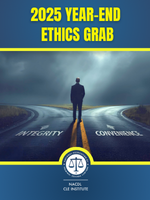Racial Disparities Race Matters: Seminar Videos Resources on Race and Sentencing Additional Resources on Race and the Criminal Legal System
Many of the conditions that drove the exponential rise in American incarceration, with deeply disproportionate impacts on Black and brown communities, persist today. The Violent Crime Control and Law Enforcement Act of 1994, also known as the crime bill, implemented a host of provisions that put more Black and brown people behind bars, for longer periods of time. The crime bill established numerous three-strikes laws, which impose automatic life sentences for individuals convicted of certain felonies if they already have two convictions on their record (American Progress, 2019). As states adopted similar three-strikes laws, their incarceration rates dramatically expanded, as did the number of individuals serving life sentences in state prisons. As of 2019, 28 states still had three-strikes laws in effect, to the particular detriment of Black people, who make up about three quarters of those sentenced to life in prison in Louisiana, Mississippi, and Maryland. Even in states that don’t have three strikes laws, and in cases in which it may not apply, prosecutors and judges can recommend and decide sentences based on a defendant’s criminal history. The result is that communities subject to more aggressive policing and prosecution are subject to harsher sentences.
The impact is clear:
- 48% of the approximately 206,000 individuals serving life and ‘virtual life’ sentences are African American, and 15% are Latino (The Sentencing Project, 2018).
- In Alabama, Illinois, Georgia, Maryland, Louisiana, Mississippi, and South Carolina, two-thirds or more of individuals serving life and ‘virtual life’ sentences are African American (The Sentencing Project, 2017).
- Over half (56.4%) of those serving life without parole sentences are Black, 33.5% are white, and 7.4% are Hispanic (Prison Policy Initiative, 2016).
- 80.4% of life- and virtual-life sentenced youth are people of color; 55.2% of those youth are African American (The Sentencing Project, 2017).
Prosecutorial and judicial discretion contribute to racial disparities in sentencing through a variety of mechanisms, from initial charge decisions to departures from sentencing guidelines. According to a report out of University of Michigan Law School, federal prosecutors file charges that carry mandatory minimum sentences 65% more often against Black defendants than against other defendants, all other conditions remaining the same. Similarly, the Sentencing Project found that prosecutors are more likely to charge Black defendants under state habitual offender laws than similarly situated white defendants. According to a report by the United States Sentencing Commission, Black male defendants between 2012 and 2016 were 21.2% less likely than white male defendants to receive a non-government sponsored downward departure or variance. Among individuals who received sentences within the applicable sentencing guidelines range, Black male defendants’ sentences were 7.9% longer than those received by white male defendants. And these disparities were not a result of different histories of violence—even accounting for violence in a defendant’s past, Black male defendants received sentences that were 20.4% longer than similarly situated white male defendants (U.S. Sentencing Commission, 2017).
Race and Sentencing Videos
More on Race and Sentencing:
-
Nothing But Time: Elderly Americans Serving Life Without Parole, The Sentencing Project, June 23, 2022.
-
The Color of Justice: Racial and Ethnic Disparities in State Prisons, The Sentencing Project, Oct. 2021.
-
In the Shadows: A Review of the Research on Plea Bargaining, Vera Institute of Justice, September 2020.
-
Racial Disparities in the Massachusetts Criminal Justice System, Criminal Justice Policy Program at Harvard Law School, September 2020.
-
3 Ways the 1994 Crime Bill Continues to Hurt Communities of Color, Ranya Shannon, American Progress, May 10, 2019.
-
Criminal justice reform doesn’t end system’s racial bias, Leah Sakala and Nicole D. Porter, USA Today, Dec. 12, 2018.
-
Report to the United Nations on Racial Disparities in the U.S. Criminal Justice System, The Sentencing Project, 2018.
-
Still Life: America’s Increasing Use of Life and Long-Term Sentences, The Sentencing Project, 2017.
-
Demographic Differences in Sentencing: An Update to the 2012 Booker Report, United States Sentencing Commission, November 2017.
-
The Color of Justice: Racial and Ethnic Disparity in State Prisons, The Sentencing Project, June 2016.
-
The Criminal Justice System is Riddled with Racial Disparities, Prison Policy Initiative, August 2016.
-
Racial Disparity in Federal Criminal Sentences, Sonja B. Starr and M. Marit Rehavi, University of Michigan Law School Scholarship Repository, 2014.
-
Thirty Years of Sentencing Reform: The Quest for a Racially Neutral Sentencing Process, Cassia C. Spohn, Policies, Processes, and Decisions of the Criminal Justice System, 2000.
Additional Resources on Sentencing













